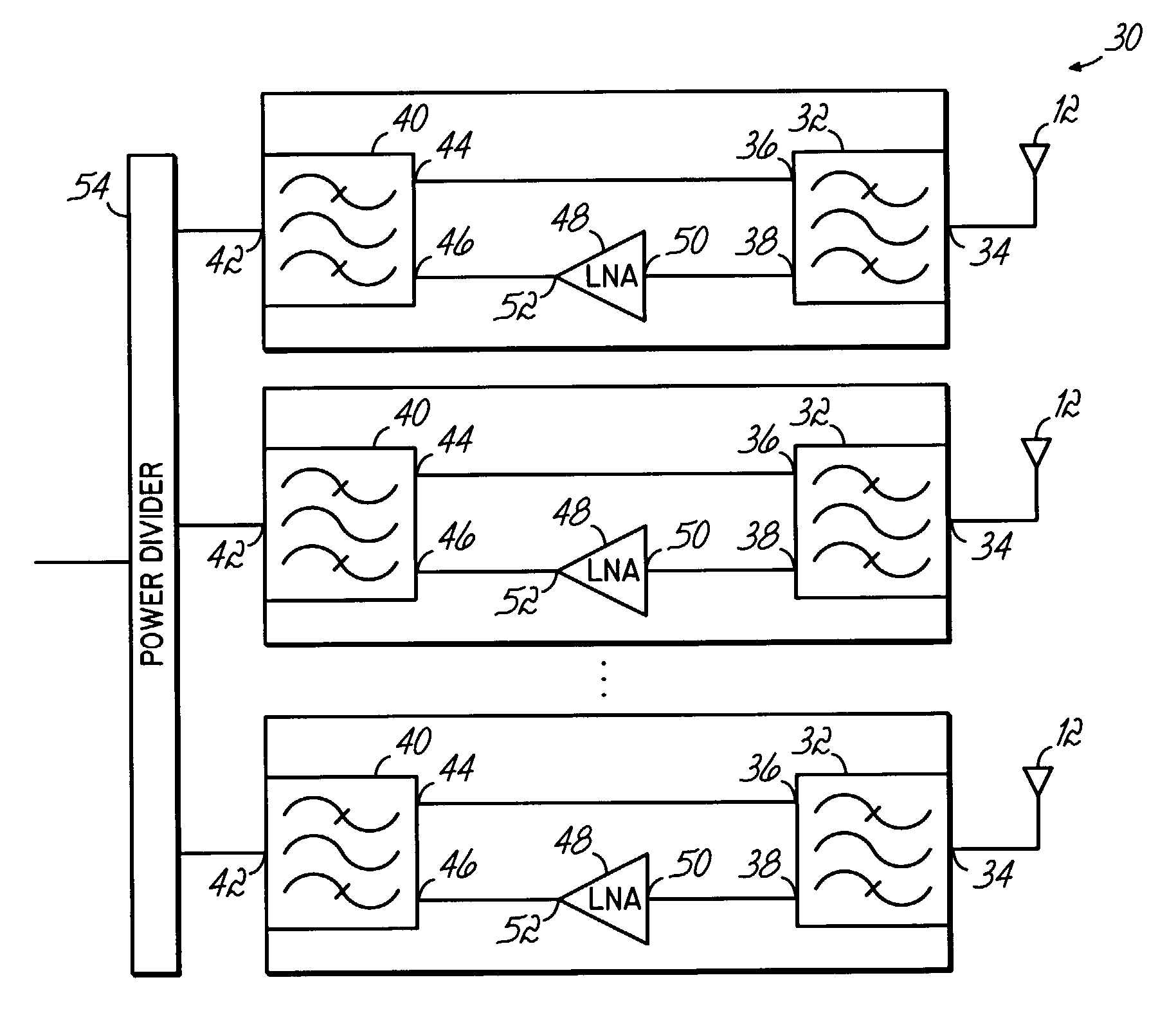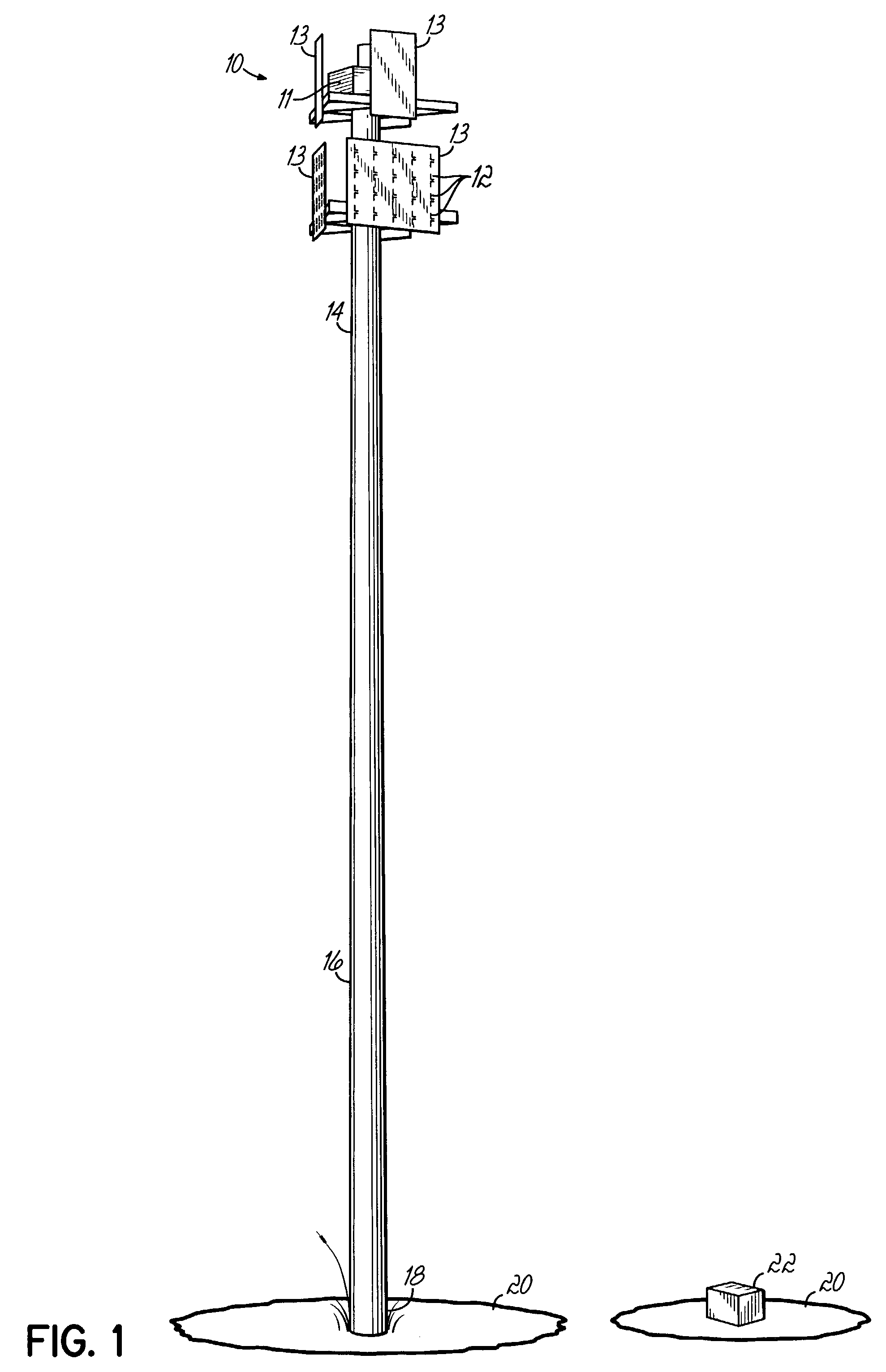Distributed active transmit and/or receive antenna
- Summary
- Abstract
- Description
- Claims
- Application Information
AI Technical Summary
Problems solved by technology
Method used
Image
Examples
Embodiment Construction
[0017]The invention addresses the above-discussed problems associated with the prior art by providing an antenna system 10 configured to improve cellular system performance by, in one respect, mitigating the occurrence of insertion losses through the use of an antenna incorporating an array of antenna elements and distributed amplifiers coupled to those individual elements in the array.
[0018]Referring generally to FIG. 1, there is shown an exemplary antenna system 10 in accordance with the precepts of the present invention. In order to achieve lower incidence of insertion loss, the antenna system 10 uses amplification equipment 11 disposed at the antenna element level. As such, exemplary antenna system 10 typically includes a plurality of beam width antenna arrays 13 suspended by a tower 16 or other support structure. Each antenna array 13 may include a plurality of antenna elements 12. The antenna arrays 13 may attach proximate the top 14 of the tower 16. Tower 16 may be supported ...
PUM
 Login to view more
Login to view more Abstract
Description
Claims
Application Information
 Login to view more
Login to view more - R&D Engineer
- R&D Manager
- IP Professional
- Industry Leading Data Capabilities
- Powerful AI technology
- Patent DNA Extraction
Browse by: Latest US Patents, China's latest patents, Technical Efficacy Thesaurus, Application Domain, Technology Topic.
© 2024 PatSnap. All rights reserved.Legal|Privacy policy|Modern Slavery Act Transparency Statement|Sitemap



